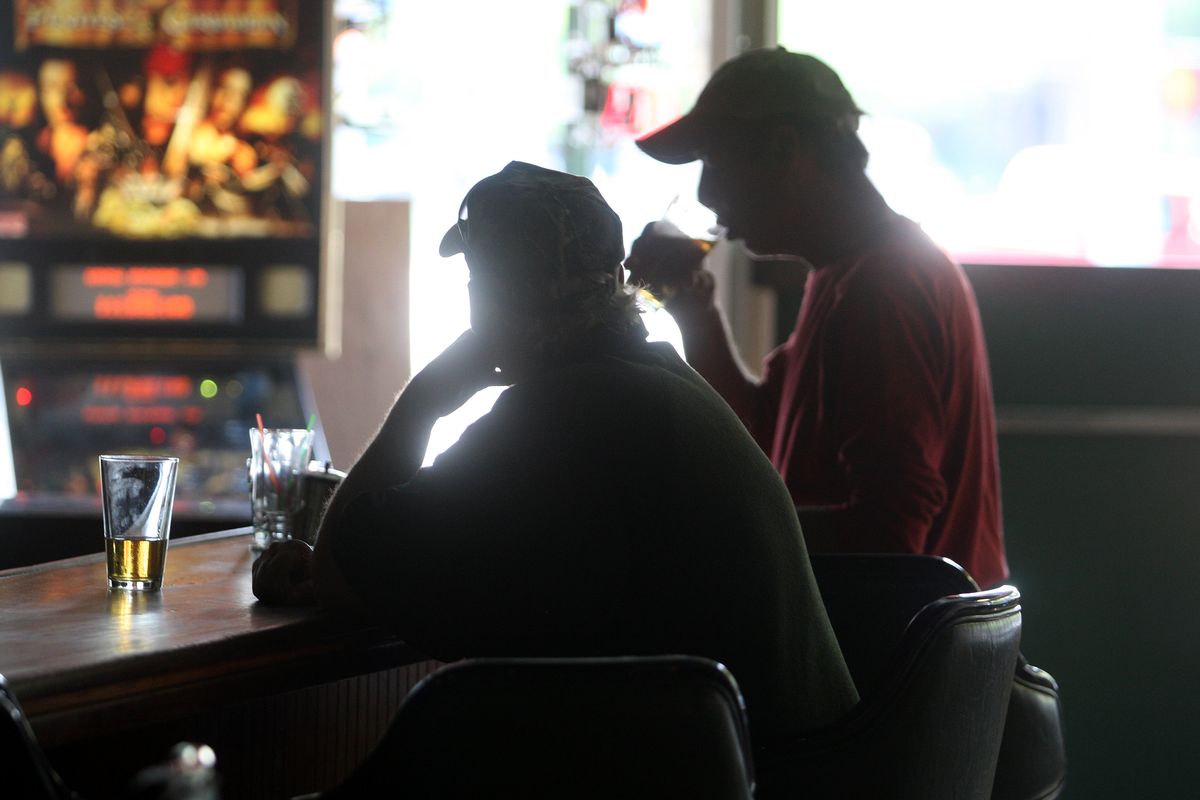Montana drinking and driving culture at crossroads

HELENA, Mont. — Montana has long had a reputation as a place where you could crack open a beer while driving down the interstate just about as fast as you liked.
Until 2005, when the state came under heavy duress from the federal government, it was legal to drink and drive in many places. And a few years before that there wasn’t even a speed limit on major highways and in rural areas.
But spurred by the high-profile death of a highway patrolman at the hands of an intoxicated driver, Montana’s Old West drinking and driving culture is retreating. Judges are rejecting lenient plea deals and law enforcement leaders are exploring different ways of keeping track of repeat offenders.
Even the Legislature, which just a few years ago struggled mightily to ban open containers of booze in cars, is beginning to promise tough new laws. This comes after years of virtually ignoring the state’s ranking at or near the top of per capita drunken driving deaths.
Montana has long been tolerant of drivers who drink.
Some small town bars still offer cocktails in a to-go cup. Repeat DUI offenders are shuttled in and out of the system before they have a chance to sober up.
Montana has many isolated roads and almost no public transportation. A saloon era attitude toward drinking, coupled with Montana’s libertarian streak that eschews tough law enforcement or even letting local police set up roadside “safety checks,” combine for a deadly scenario, experts say.
“There is significant anti-government sentiment which spills over into impaired driving enforcement,” said Mothers Against Drunk Drivers’ Rebecca Sturdevant. “Rather than praising public safety officers for keeping our highways safe, I have heard legislators berate them for bothering drivers.”
But almost no one doubts the state is coming to grips with its drinking and driving issues.
A statewide conversation started last year after the high-profile death of Montana Highway Patrol trooper Michael Haynes — killed in a head-on crash after a bartender served the other driver 13 drinks over 3 1/2 hours. The judge in that case sent a message by throwing out a plea deal against the bartender in favor of mandatory jail time.
Headlines in the state have since been full of repeat offenders being charged with a 9th or even 10th DUI, keeping editorial pages abuzz with demands for a solution.
“Obviously it’s very exciting to see the change. It is a huge part of the culture here, drunk driving, binge drinking and underage drinking,” said Tawny Haynes, the widow of the officer who was killed. “Alcohol just seems to be way of life around here, a right of passage. I have nothing against alcohol, you just have to be responsible.”
Haynes, who said her youngest son only knows his dad as the picture on the wall, said she feels compelled to honor her husband — who led all troopers in DUI arrests before being killed — by giving a face to the problem.
“I think the people of Montana are really ready for this change that seems to be happening,” she said.
The National Highway Traffic Safety Administration found that Montana led all states in 2008 in alcohol-related traffic fatalities per miles traveled. Montana had 229 that year in a state with just 1 million residents — compared to Rhode Island, which has about the same population but only had only 65 such deaths.
Not only are judges dishing out stiffer sentences, the attorney general has launched a pilot project in Helena to force subsequent DUI offenders to do daily tests for alcohol use — all at their own expense. Lawmakers who meet every other year will look at unrolling that program statewide then they convene in 2011.
“We didn’t want to wait for the next Legislature before we started taking steps, and so we put together a pilot that we hope will show some results,” Attorney General Steve Bullock said.
Bullock thinks all the publicity put on repeat drunk drivers is already helping. He says that so far this year DUI fatalities are down 40 percent, and he is cautiously optimistic that trend will hold.
“I think we have hit a point where Montana has said ’enough is enough for these subsequent DUIs,”’ the attorney general said.
It’s been a long road.
Back in 2003, state Sen. Jim Shockley led the lawmakers who killed an attempt to ban drivers from drinking a beer while they were driving — as long as the driver wasn’t drunk.
The outspoken civil libertarian railed against the U.S. Department of Transportation for attaching highway money to the issue. Now Shockley, running for state attorney general, is among those looking for tougher drinking and driving laws.
His plan would set up a 24-hour magistrate in Helena that police in the state could call to get a warrant to take blood from suspected drunk drivers. Right now, Montana drivers can refuse the test. They still lose their driver’s license but deny prosecutors that evidence for a DUI charge.
The proposed crackdowns will cost extra money at a time Montana is be looking to cut spending.
“All of these things are going to cost money, and that is a problem. But if the people really want something then we are going to have to do it,” said Shockley.
Tawny Haynes said lawmakers no longer have a choice.
“If this is what the people want, and I think it’s clear they do, then this is the direction the Legislature needs to go in,” she said. “I think people are sick of it, so it is not something they can ignore.”